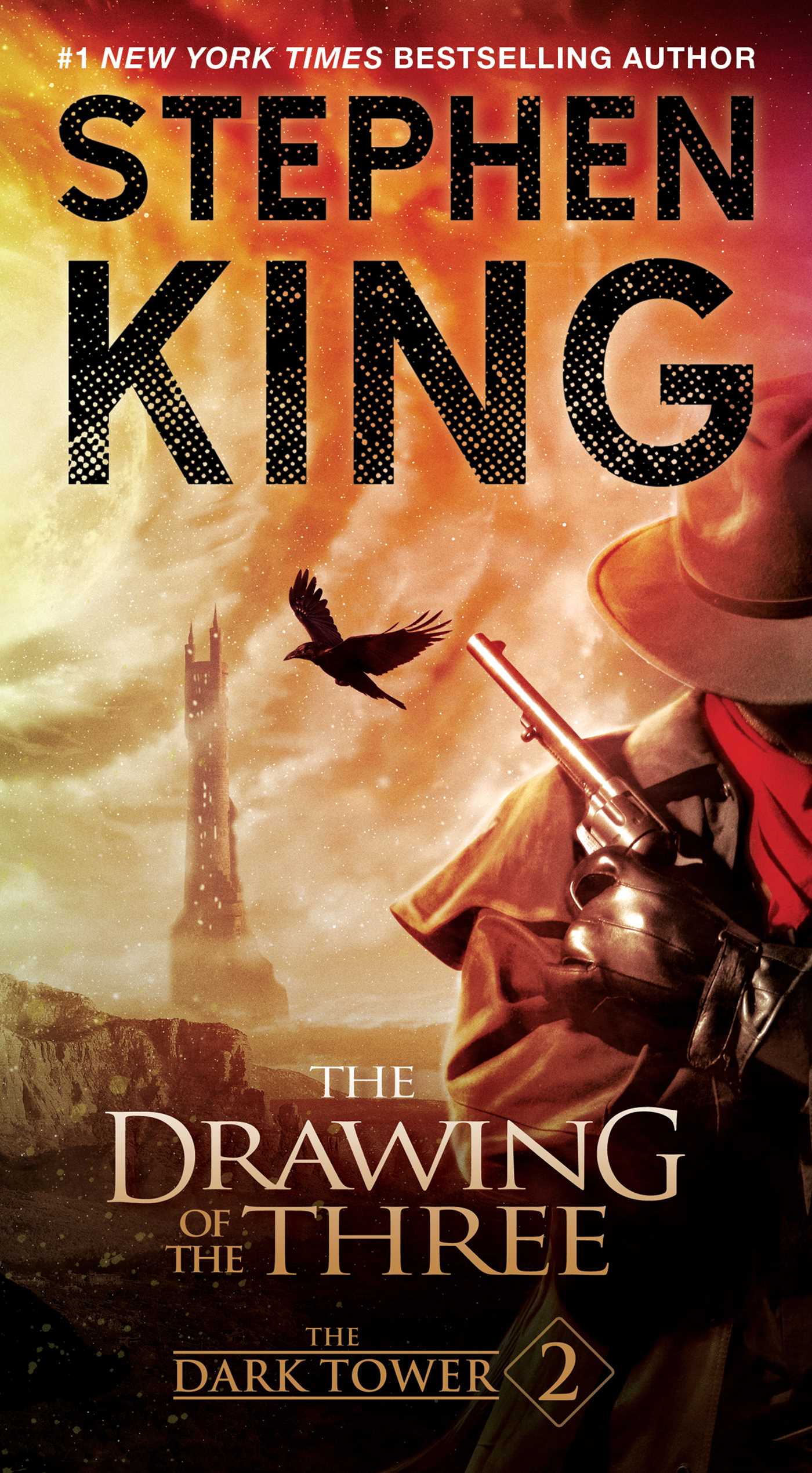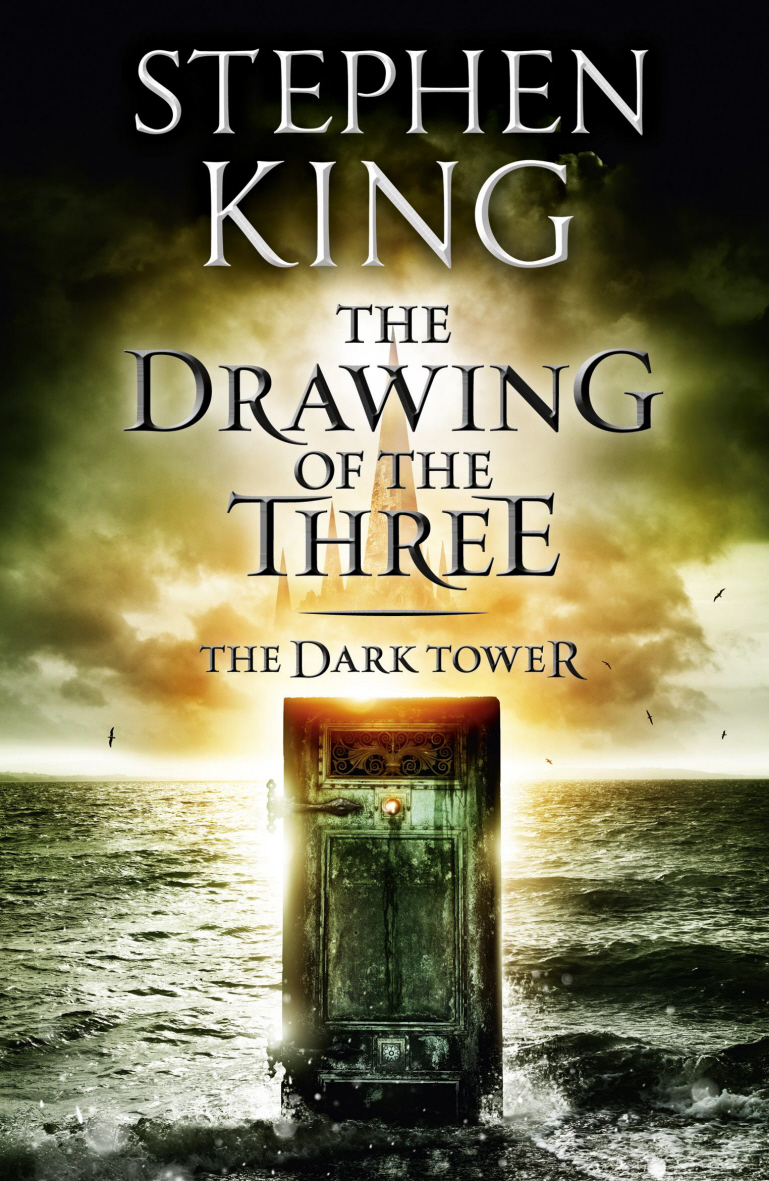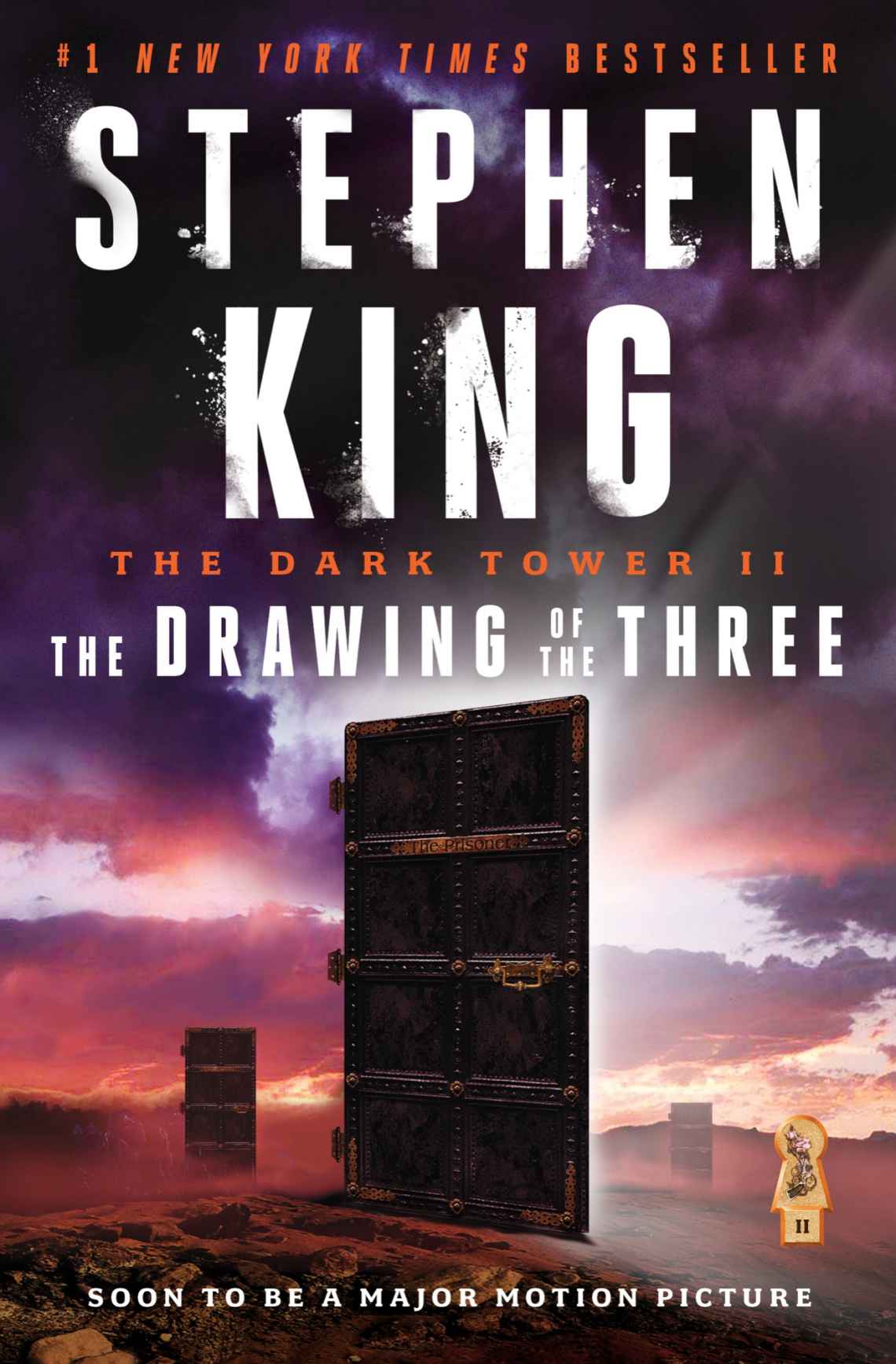After having such a difficult time getting through the first volume of Stephen King’s epic Dark Tower series, I had some trepidation towards volume two, The Drawing of the Three. I am pleased to report that this volume of the series goes down much easier than volume one.
The Dark Tower II: The Drawing of the Three (1987)
 Written by: Stephen King
Written by: Stephen King
Genre: Dark Fantasy/Horror
Pages: 529 (2016 Revised Edition Paperback)
Series: Book Two of The Dark Tower
Publisher: Scribner
Why I Chose It: I have embarked upon my own journey to the Tower, originally with the goal of reading all of them before the movie version hits theaters this summer, but with an amended goal of reading them before the end of 2017.
The premise:
The second volume in Stephen King’s #1 bestselling Dark Tower Series, The Drawing of the Three is an “epic in the making” (Kirkus Reviews) about a savage struggle against underworld evil and otherworldly enemies.
“Stephen King is a master at creating living, breathing, believable characters,” hails The Baltimore Sun. Beginning just less than seven hours after The Gunslinger ends, in the second installment to the thrilling Dark Tower Series, Roland encounters three mysterious doorways on a deserted beach along the Western Sea. Each one enters into a different person’s life in New York — here, he joins forces with the defiant young Eddie Dean, and with the beautiful, brilliant, and brave Odetta Holmes, to save the Dark Tower.
“This quest is one of King’s best…it communicates on a genuine, human level…but is rich in symbolism and allegory” (Columbus Sunday Dispatch). It is a science fiction odyssey that is unlike any tale that Stephen King has ever written.
Some spoilers, nothing major.
To begin, one of the biggest issues that I had with the titular gunslinger in volume 1 was Roland’s personality. Specifically, his seeming lack of personality. Roland is a man on a quest. He’s utterly consumed with a single-minded desire to find the Tower. This, unfortunately, does not leave the reader with much to work with on an emotional level. Roland is a distant figure that you truly cannot root for in many occasions and circumstances. He’s the “hero,” but he’s not terribly likeable.
All of this changes when The Drawing of the Three really starts to take off. King is a master at creating believable, dynamic relationships between his characters. Here, he truly shines when Roland finally comes into contact with individuals who are able to serve as foils and sidekicks to his stoic determination. They humanize Roland in a way that no character has previously been strong enough to manage.
 Another of King’s strengths is a knack for writing about sympathetic, regular people who just happen to end up in truly effed-up situations. Take, for example, Eddie Dean. Eddie is the first of Roland’s companions to be “drawn” into Roland’s life and quest towards the Tower. For reasons that are not yet explained, Roland happens upon a door that allows him to look straight out of Eddie’s eyes and into his life as an eighties era drug addict. Roland, at this point, is dying of an infection while Eddie is on the verge of death (though he doesn’t know it when he and Roland first make contact). Eddie, aside from being a drug-addled mule on his first job, is our “regular person” in the first section of the novel. Consider his position. He’s on a plane, minding his own business, when he recognizes a foreign presence in his mind. Sounds crazy, right? It does, because it is. Rather than collapse into a screaming pile, Eddie takes things in stride. Through a variety of experiences that should have killed both men, Roland and Eddie manage to form an uneasy bond. Eddie isn’t truly given a choice in the matter. Roland pulls Eddie into his world without a second thought. Eddie is understandably upset about all of this. It’s one thing for a drug user to hear voices in their head. It’s quite another when one of those voices somehow manages to drag you through a phantom door and onto a beach that is populated with lobster monsters (referred to as “lobstrosities”).
Another of King’s strengths is a knack for writing about sympathetic, regular people who just happen to end up in truly effed-up situations. Take, for example, Eddie Dean. Eddie is the first of Roland’s companions to be “drawn” into Roland’s life and quest towards the Tower. For reasons that are not yet explained, Roland happens upon a door that allows him to look straight out of Eddie’s eyes and into his life as an eighties era drug addict. Roland, at this point, is dying of an infection while Eddie is on the verge of death (though he doesn’t know it when he and Roland first make contact). Eddie, aside from being a drug-addled mule on his first job, is our “regular person” in the first section of the novel. Consider his position. He’s on a plane, minding his own business, when he recognizes a foreign presence in his mind. Sounds crazy, right? It does, because it is. Rather than collapse into a screaming pile, Eddie takes things in stride. Through a variety of experiences that should have killed both men, Roland and Eddie manage to form an uneasy bond. Eddie isn’t truly given a choice in the matter. Roland pulls Eddie into his world without a second thought. Eddie is understandably upset about all of this. It’s one thing for a drug user to hear voices in their head. It’s quite another when one of those voices somehow manages to drag you through a phantom door and onto a beach that is populated with lobster monsters (referred to as “lobstrosities”).
Consider also Odetta/Detta, Roland’s Lady of Shadows. Odetta Holmes doesn’t need to be pulled through Roland’s door to be in a messed up situation. She lives and breathes a difficult, frightening life all on her own. Odetta suffers from what King mistakenly refers to as schizophrenia (remember, this was written in 1987), but is more accurately a severe case of Dissociative Identity Disorder (multiple personalities, in layman terms). Odetta is an educated, wealthy, Black woman in the sixties. She’s a well-mannered individual who is active in the civil rights movement. Detta Walker, Odetta’s alternate personality, is a polar opposite. She’s angry, sly, and prone to periods of kleptomania. Neither personality is aware of the other’s existence, but it is implied that Detta is somewhat aware of the times when Odetta is in control (the “blanks”).  The idea of losing yourself within the confines of your own skull is frightening. King takes that fear and brings it to vivid, ugly life on the pages. It’s horrifying…and it’s real. You might not find yourself pulled through a door that leads to a hellish alternate dimension, but you might suffer from emotional trauma or succumb to dementia that leads to you losing track of your own mind. Through one thing and another that I am not discussing for spoilers’ sake, the Lady of Shadows is able to find even ground between the two halves of her personality. She settles into a new identity, Susannah (which was her middle name in both iterations of her previous personalities), and takes her place next to Eddie as his romantic companion.
The idea of losing yourself within the confines of your own skull is frightening. King takes that fear and brings it to vivid, ugly life on the pages. It’s horrifying…and it’s real. You might not find yourself pulled through a door that leads to a hellish alternate dimension, but you might suffer from emotional trauma or succumb to dementia that leads to you losing track of your own mind. Through one thing and another that I am not discussing for spoilers’ sake, the Lady of Shadows is able to find even ground between the two halves of her personality. She settles into a new identity, Susannah (which was her middle name in both iterations of her previous personalities), and takes her place next to Eddie as his romantic companion.
Our three heroes are at a semi-peaceful place (metaphorically speaking) by the end of the novel. Roland confesses that he has love for his new companions, but does not shy away from Eddie’s accusations that he would sacrifice both of them in his goal to reach the Tower. It’s a powerfully worded passage, and I won’t quote the entirety here. Roland speaks passionately of their quest, telling Eddie that three of them will be “magnificent.” He finishes with this:
“We are going to go, Eddie. We are going to fight. We are going to be hurt. And in the end we will stand.”
Now it was Eddie who said nothing. He could think of nothing to say.
Roland gently grasped Eddie’s arm. “Even the damned love,” he said. (pg 458)
In conclusion:This is a much more accessible book than The Gunslinger. It is written much more in King’s signature, readable style than Book I. I would almost suggest that one could, potentially, start with this novel and then go back and read The Gunslinger. The plot is forgiving enough to let you know what’s going on and give you a much better reason to care what happens to Roland prior to his joining with Eddie and Susannah. I also say this as someone who has read both books, so my opinion may be slightly skewed. If you’ve read the series before and agree (or disagree, for that matter), please be sure to say so in the comments. I cannot say for sure when the next installment of this read-along will happen, but if you’re just now joining us, you have plenty of time to catch up.

I’ve tried at least three times to get into THE GUNSLINGER and failed. I’m hoping the movie will get me past that.
Try starting here. It’s a much more accessible volume, and King’s pretty good about catching the reader up about what’s happening. Then, if you’re a completist, go back and pick this one up later.
This review has me more intrigued than the review for the first book. There seems to be more of a story with book two, but I refuse to start reading until I see the movie!
I really need to catch up on my movie-related Stephen King reading. I need to read It and pick the Dark Tower series back up.